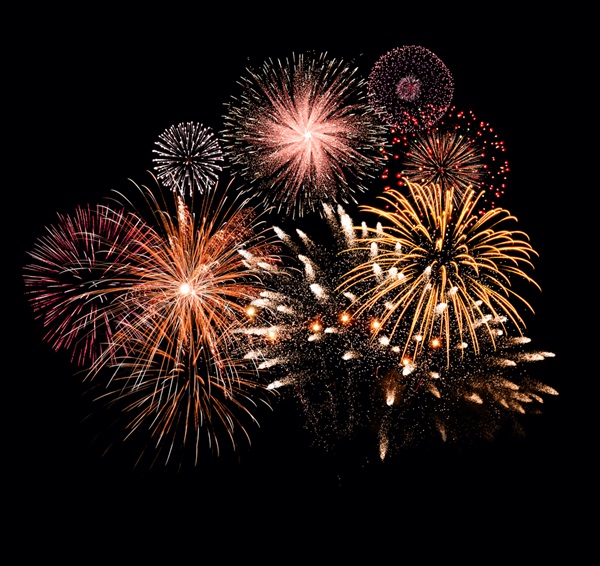Blog No.103
Author: Kyoko Akiyama

Hi everyone! I would like to use this blog as a way to introduce myself and also introduce some great activities in Japan that make the hot, humid summers here a little bit more bearable!
My name is Kyoko Akiyama and I joined ELSI on 1/April/2015. My role at ELSI is to be the EON Project Manager. For those of you who are not familiar, ELSI Origins Network (EON) is a newly funded project that will officially launch on 1/July/2015, just days away!
Let me briefly introduce my background. I was born in Tokyo and due to my late father's (diplomatic) work, I have lived in Beijing, China, Ulaanbaatar (more familiarly known as Ulan Bator), Mongolia, Wellington, New Zealand, and The Hague, the Netherlands. I also lived and worked briefly in Dubai, UAE, and Hong Kong, China SAR. I used to be able to say "I've lived half of my life outside of Japan!" but let's just say that ratio has shifted in recent years - we are still close though!
Whatever the ratio, one thing I can say for sure is that each time I come back from living abroad, I am taken by my own national culture; I fall in love with very typical and sometimes mundane aspects and activities of Japan again and again. I have been exposed to the wonders (good and bad, natural and man-made) of the various places I have lived but there is nothing more Japanese to me than the distinct four seasons and all of our big and small "celebrations" around them. Whether it is the stage art of Kabuki or Noh, Sadou (茶道, the way of tea), or Kadou (華道, the way of 'ikebana' or flower arrangement), the incorporation and expression of seasonality is always exquisite.
Having four distinct seasons means having comparisons. For a seemingly innocently situated archipelago of basically four main islands, Japan has a summer that is not to be underestimated. It is hot and humid in a way that surprises even my equatorial-living friends.
But we have our ways to celebrate summer. My favorite summer activity is to enjoy the many firework festivals that take place all over the country. The Japanese can be (overly?) serious and detail-oriented sometimes but when this is applied to fireworks, it produces magic. The aesthetic sense combined with craftsmanship produces some of the most amazing "works of art" in the world. Japanese fireworks are very cool!
How did fireworks arrive in Japan? Sometime during the Sui and Tang dynasties (approx. 600 to 900 A.D.) in China, alchemists had discovered a precursor to gunpowder. After that, various forms of fireworks were developed for purposes of warning and scaring-off of enemies. Those further developed to weapons to be used in cannons and muskets.
Leave it to the Italians to transform gunpowder into art. During the creative period of the Renaissance, the wealthy Florentines began to create elaborate on-ground firework stage shows for entertainment. Fireworks for appreciation spread throughout Europe and in 1543, it is the Portuguese who brought fireworks to Japan. It had to travel through the Silk Road through Europe to finally make it here from China!
In Japan, fireworks are a summertime activity, almost never to be seen in the winter. There is a reason for this. In 1733, the 8th Tokugawa shogun, Yoshimune, held a firework show to honor the spirit of our ancestors. This was a period of economic crisis, of famine and disease, where many people suffered or died. The reason for having firework festivals changed year by year but the association of fireworks with the spirit of ancestors and the dead stuck.
Once a year, during O-bon season (in Tokyo, it is 13 - 15 July; all the other areas are 13 -15 August), the Japanese believe, or culturally celebrate, that the soul of the deceased family members come back home. We honor their homecoming and the idea is to see them off or guide their souls back to their world through the light of fireworks. Hence all of the firework festivals during the summer. Related, summer is also a time for scary ghost stories that leave a chill down your spine!
When rainy season ends, the weather will suddenly turn very hot and humid. I hope you will all put on a traditional 'yukata' and go and spend the steamy evenings outdoors at some of the firework festivals recommended below!
Fireworks schedules:
18 & 19/July Yamashita Park (Yokohama) (approx. 3,000 fireworks)
21/July Katsushika Baseball park (approx. 13,000)
23/July Kamakura Beach Firework Festival (approx. 2,500)
25/July Sumida River Firework Festival (approx. 20,000)
25/July Yokohama Wakabadai Danchi Festival (approx. 2,000)
1/Aug Edo River Firework Festival (T.B.D.)
2 & 3/Aug Nagaoka (Niigata) Fireworks Festival
8/Aug Tokyo Bay Festival (approx. 12,000)
15/Aug Lake Suwa (Nagano) Fireworks Festival (approx. 40,000)
22/Aug Tama River Fireworks Festival (T.B.D)
5/Sep New design fireworks exhibition (Lake Suwa) (approx. 18,000) --Every year in the beginning of September, in Nagano, they hold a presentation of the brand new designs in fireworks. For those of you who can't wait for next summer, this one is for you!
In addition, I would like to introduce some of my favourite spots in and around Tokyo for your relaxation!
| In Tokyo | Historically famous parks |
| Showa park (Tachikawa), famous for Sakura, swimming pools and Fireworks in summer) | |
| In Saitama prefecture | Saitama Bonsai Museum |
| In Chiba prefecture | Kawamura Museum There are bus services from Tokyo station (approx. 60 mins one way, about JPY1,400 and it becomes JPY1,200 if you have a Pasmo or Suica card.) |
| In Yamanashi prefecture | Kubota Itchiku Museum |
| In Shizuoka prefecture | Clematis no oka (JR Mishima station) |
| In Kanagawa prefecture | Oiso Farm |
